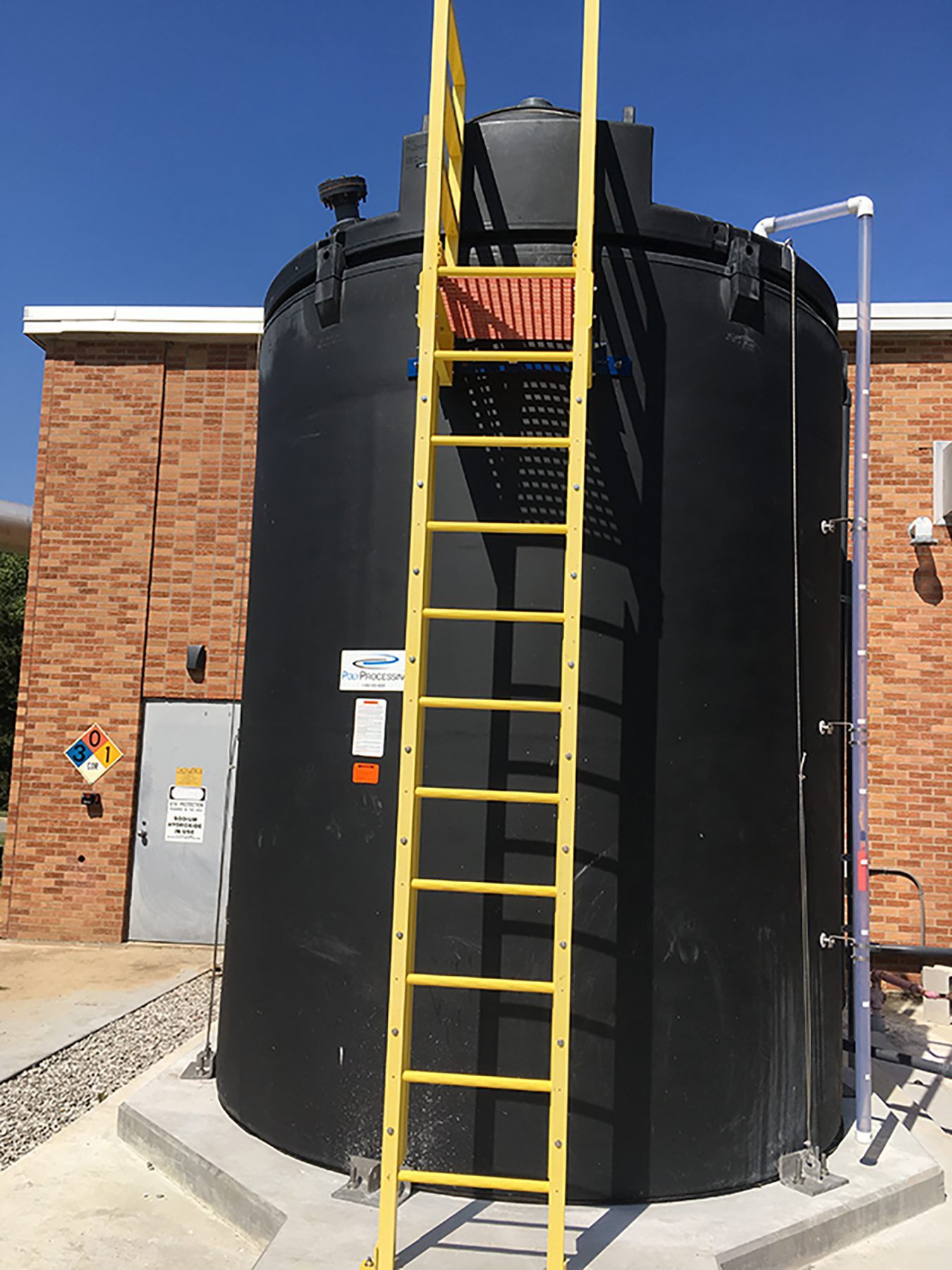Flat Bottom Chemical Storage Tanks (50 – 50,000 Gallons)
A commodity tank gives you the lowest cost-per-gallon. A James Riggins–spec’d system gives you the lowest cost-of-ownership. We match resin, wall thickness, fittings, and controls to your exact chemistry, temperature, and duty cycle for a 20+ year life—with zero spec failures.
The James Factor: Tank Specs You Don’t Have to Second-Guess
James pairs the right tank with the right fittings, containment, and controls so you get maximum uptime, no “elephant feet” bulging, and code-clean compliance.
Related systems: Monitoring & Automation · Chemical Feed Skid Systems · Chemical Transfer Pumps
Vendor Lineup: Spec-Ready Flat Bottom Tanks
Liberty works with proven manufacturers to match your exact duty cycle, from standard duty HDPE to high-temp polypropylene.

- Best For: Aggressive chem & high temp
- Material: Extrusion-wound PP/HDPE
- Feature: Rigid walls, no “elephant feet”
- Temp: PP to 200°F (water) / 180°F (chem)
- Capacities: 50–50,000 gal

- Standards: ASTM D1998
- Materials: HDLPE / XLPE
- SG Ratings: 1.35 · 1.5 · 1.9 (to ~15.75 lb/gal @100°F)
- Use: Broad chemical storage
- Types: Vertical & batch tanks
- SG: Up to 2.0 (smaller units)
- Standards: ASTM D1998-06 design
- Use: Utility & process storage

- Containment: SAFE-Tank® double-wall systems
- Full Drain: IMFO® integrally molded outlet
- Offerings: Vertical & sloped-bottom
- Use: Purity-critical, spill-averse sites
Design Note: Stop “Elephant Feet” Bulging Before It Starts

Flat bottom tanks see the highest stress where the sidewall meets the floor. Thin roto-mold tanks can bow outward—known as “elephant feet”—especially with heat and high specific gravity.
James’ approach: specify the right resin (HDPE/XLPE/PP), wall thickness, and supports, then integrate containment and controls so operators get a system that stays straight and compliant for decades.
Need pumps or controls too? See Chemical Transfer Pumps and Monitoring & Automation.
Applications & Industries
From corrosives and caustics to food-grade water, we spec tanks for the real world—chemistry, temperature, fittings, freight, and field service.
The Bottom Line: Uptime, Compliance, ROI
Get the Right Tank, Guaranteed.
Don’t gamble on a commodity spec. Get a free consult with James Riggins to match tank material, SG, fittings, and containment to your exact duty cycle.
Flat Bottom Tank FAQ
What’s the difference between HDPE, XLPE, and Polypropylene (PP)?
HDPE is standard duty for many chemicals; XLPE improves stress-crack resistance for certain oxidizers; PP is the high-temperature choice (to ~200°F water / 180°F chemicals) and resists pH 0–14. We select based on your chemical, temp, and SG.
What is ASTM D1998?
ASTM D1998 is the core design/rotomolding standard for poly tanks. We spec to the standard and beyond—accounting for fittings, seismic anchors, loads, and service conditions.
How do you prevent “elephant feet” bulging?
By matching resin and wall construction (thicker roto or extrusion-wound), using correct SG ratings, and designing supports/containment. This keeps the sidewall-to-floor transition rigid under load and temperature.
How do you ensure NSF-61 and SPCC compliance?
We specify NSF/ANSI 61 certified materials/components where required and integrate secondary containment (e.g., double-wall or basins) with overfill/level monitoring to satisfy SPCC plans.
Can you integrate pumps, skids, and monitoring?
Yes. Liberty provides single-point accountability—tanks, feed skids, transfer pumps, and SCADA-ready controls—all spec’d by James.

Flat Bottom Tanks
The Backbone of Reliable Storage
Spec’d right the first time. James brings 30+ years of experience to guarantee your tank lasts decades — with the right resin, wall thickness, and fittings for your exact duty cycle.
Talk to James & Get the Right Tank

